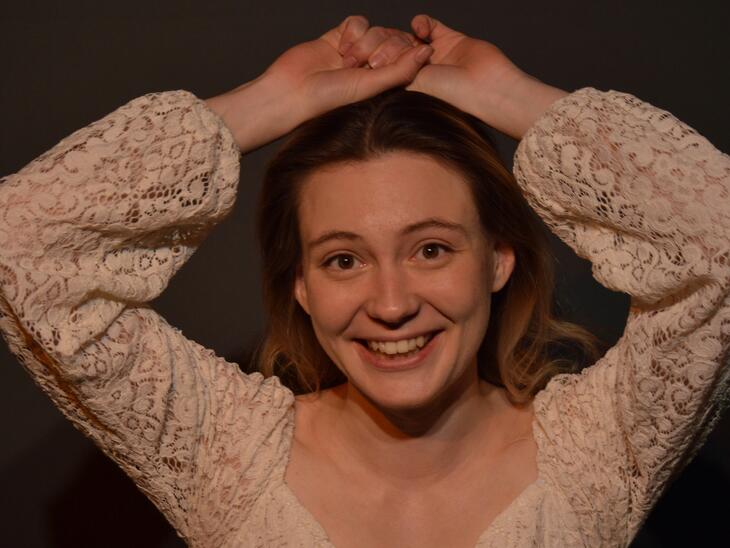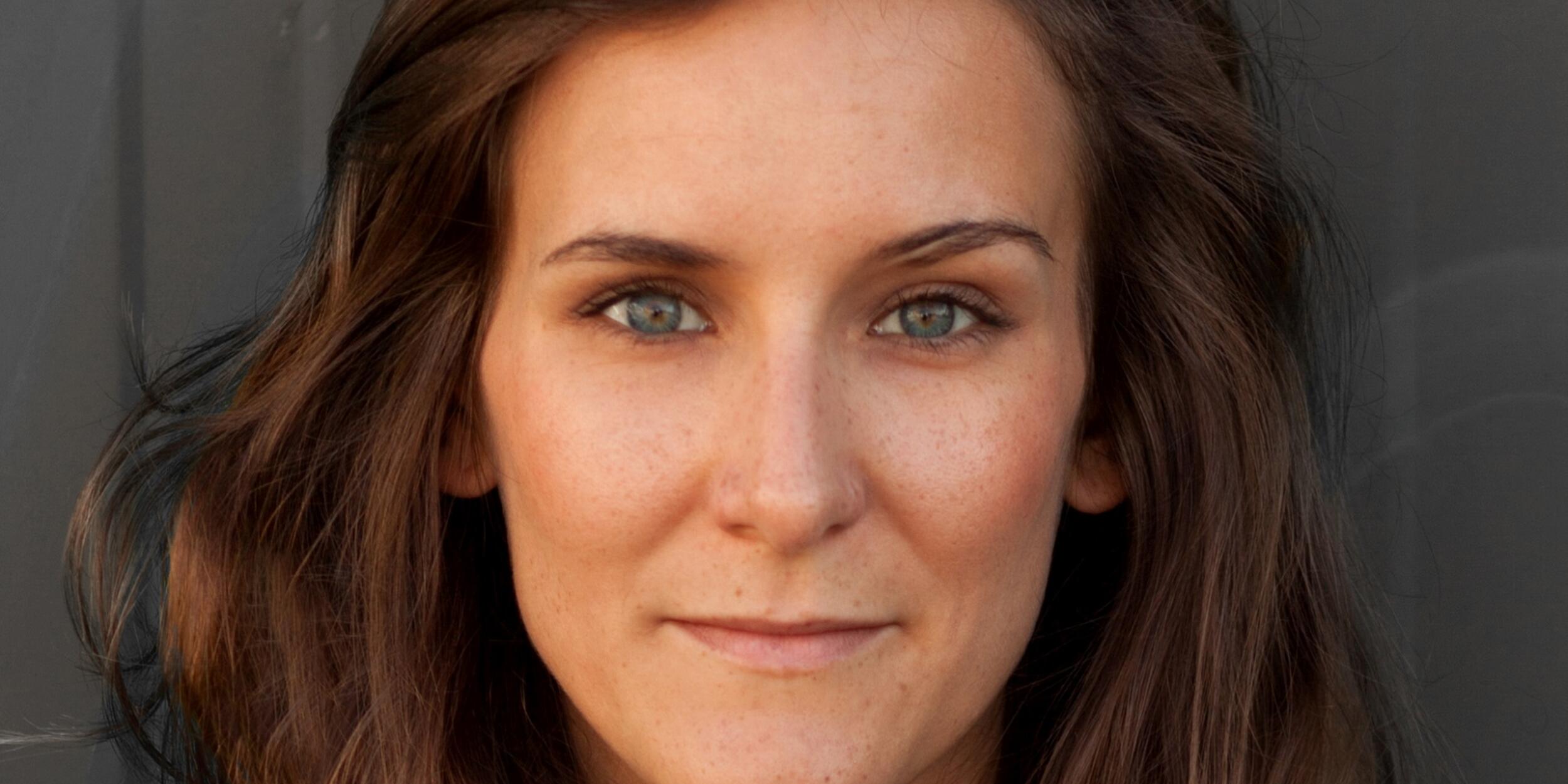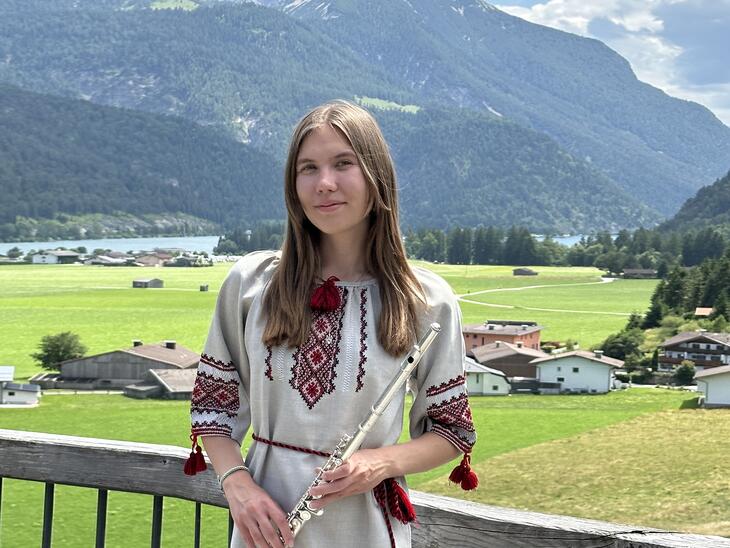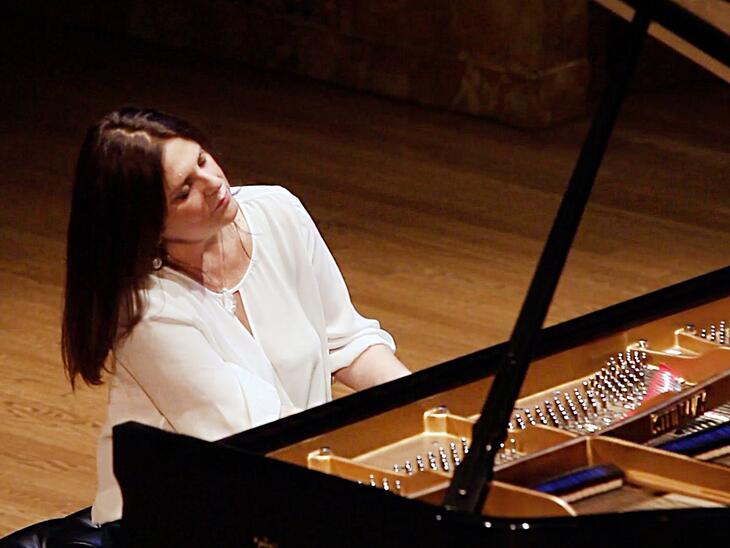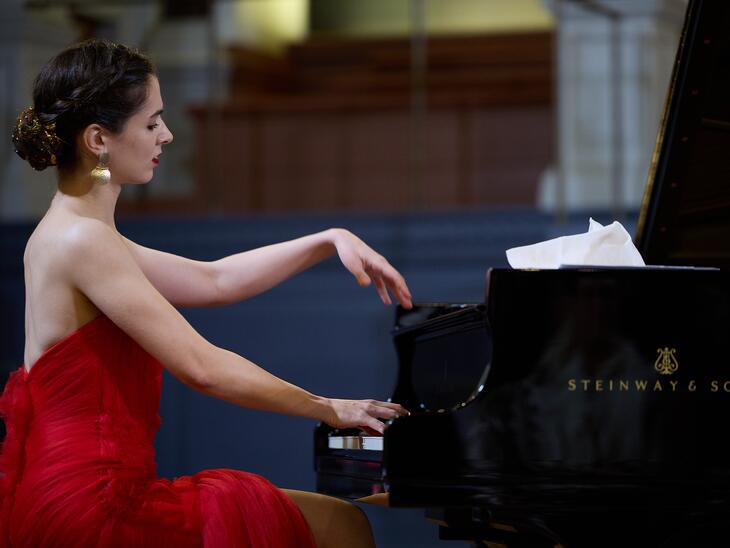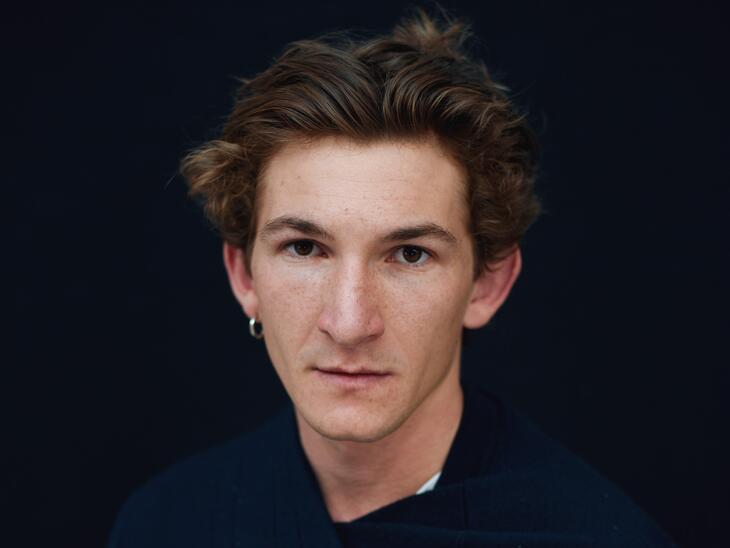What do you do professionally, what projects are you involved with?
I currently teach dance, body and acrobatics at the Schauspielhaus Salzburg's in-house acting academy and am a freelance artist, actress and teacher in the fields of dance and theater. Often the disciplines of acting and dance intertwine and the competences of one field go hand in hand with those of the other. Because I am trained in different artistic fields, interdisciplinarity plays a major role in my work. The emeritus university professor Helmi Vent, director of Lab Inter Arts (LIA), leads the way with her creative work in the interdisciplinary context.
I have been and still am active in the independent scene, such as the Schauspielhaus Salzburg, in plays for a wide variety of target groups, have been on tour in Austria and abroad, and have been engaged several times as a dancer at the Salzburg Festival. Here I was able to work with dancers from the ballet company of the Salzburg Landestheater, among others. I was also invited to various theater festivals, e.g. to Munich and Stuttgart, with my own dance pieces. In addition, I have already staged and directed dance pieces myself.
Is there a specific project you are currently working on?
I am directing a play for young children and "Everyman" at the Schauspielhaus Salzburg. It's an interdisciplinary, participatory project with movement, music and language called "Invitation to the Ball". I am staging it with the first cohort of the in-house drama academy. The first rehearsals have already taken place and the premiere will be in October.
You studied elementary music and dance pedagogy, i.e. an art pedagogical subject, at the Mozarteum and completed acting training at the Schauspielhaus Salzburg. How did this decision come about? Was it always clear to you where you wanted to go?
My interest in music, dance and theater came early, but I couldn't quite decide on a discipline. During my studies I noticed that the theater and acting field appealed to me extremely. Through various impulses during my studies I found my way. The training at the Orff Institute was very broad, I learned the necessary craft to take things into my own hands and to be able to articulate and position myself as an art educator and later as an artist in a well-founded and differentiated way.
What does the training at the Orff Institute look like and what might a professional profile look like later?
Carl Orff developed an approach to working with all people, not only in early childhood, to which the Orff Institute is unfortunately often reduced, of all ages, in a very low-threshold way, from the elementary to artistic activity. Artistic activity in the sense of a whole-body expression, however, primarily through music, dance and language. The approach implies that what is inherent in me in terms of resources is already an inexhaustible source of creativity and that in almost every person there is a need for expression. Many do not sing because they think they cannot. It is similar with dancing, making music and everything else that has to do with art. But it is not about being virtuosic. This assumption prevents many from even considering their own artistic potential. It doesn't matter what you can do and how much you have learned, but only that you do it and experience how enriching it can be to express yourself artistically. And this without dilettantism and with appropriate artistic demands, often initially in elementary, basal structures. Accompanying creative processes, the development, the proverbial path that is the goal, forms the focus of the study. In the process, one comes very close to oneself and to others. The study is to a high degree personality-forming.
The professional field of an Orff graduate depends very much on the focus chosen in the course of study and on the additional qualifications and training acquired. It ranges from the own artistic activity to the art pedagogical work with any target group, children up to senior citizens, often also in the integrative area, with large and small groups or individuals. An Orff graduate is, so to speak, often the personified flexibility and performer in personal union. Much of the day-to-day work takes place within the framework of projects of various sizes in collaboration with different employers such as educational institutions, training centers, associations, other artists, theaters, concert halls, places where art is shown and practiced, the city, the country, in further education and in areas that have only opened up in recent years and continue to do so, which cannot be summarized with a blanket term, in the free field, so to speak. Early music education is a field in which Orff graduates usually find a job very quickly, because the demand is very high. In addition, one can see in children that the separation of the individual expressive disciplines is hardly possible and that they almost automatically live out all expressive languages at the same time. Only later does the subdivision into individual disciplines take place. That which is inherent in the child is therefore very close to our training from the ground up. However, it is basically the case that our training at the Orff Institute does not automatically qualify us to teach music in schools or to teach instruments in music schools; this is usually only possible for school music or IGP students. This topic had great potential for discussion when I was a student, because many would very well have the necessary skills to work in this area, especially those who chose their instrument as a focus. On the other hand, the question then arises as to what equivalent would be available to those who chose the dance or MTSI (music and dance in social and integrative work) emphasis. After all, the ability to teach an instrument at music schools naturally opens up many professional opportunities that those with a different focus would not have. An Orff graduate, no matter what he or she does, will always perceive people in their whole-body expression and teach accordingly. Music, dance, language and all other artistic media of expression can thus never exist in isolation from each other and always go hand in hand, even enriching each other, so that one discipline benefits from the integration of another. The piano students of Orff graduates, for example, will certainly not "only" make music on the piano, they will, for example, experience the rhythm of a piece as a sequence of steps through the room, sing the melody themselves or develop it further on the piano itself and think up a gestural choreography for some passages. The students are guided in such a way that it seems natural to them, and in the moment without alternative, to experience music in a variety of ways with the whole body. The piano students will thus experience their instruments as a source of creative design on several levels and thus find an individual approach to art itself and experience that art can take place in the middle of the here and now, from the affective doing. One thing opens up organically from the other. I do not want to deny this approach to other music educators, but the Orff Institute clearly focuses on it. In many places, music, dance and language are taught separately, which is great without question. But we combine the individual components with each other, and for many people this is new territory that they don't have much of an idea of. Once you have experienced this symbiosis, the added value opens up all by itself. In my opinion, this approach does not exist in competition with, but rather parallel to, more conventional art education.
Nevertheless, we still succeed time and again in having Orff graduates teach at schools or music schools via detours or back doors, e.g. through early music education or workshops/projects. Some schools have dance as a separate subject, so there are opportunities for us there as well. One of my colleagues teaches dance at a music high school. Schools and music schools are often reliable and attractive employers in a field full of temporary jobs. Of course, there is also the possibility of teaching at a university, college or academy, as I do. I also often work in continuing education at the Musikum, the Zekip (Center for Kindergarten Pedagogy) and the Bildungshaus St. Virgil.
There are many ways to get into artistic doing without having to have prefabricated texts, choreographies or pieces of music as source material or even to copy them. This approach works on absolutely every artistic level. The piece I am developing is created based on what my students offer me through ideas and questions, through guided improvisations that I put to them. My task is then to sort through the material, to contextualize it in a differentiated way, and to consistently follow the intention that has emerged in the further development of the piece. You have to know clearly what your intention is and have a trained eye, ear and fine sense, otherwise this way of working can quickly end in chaos. In addition, the way of communication, the way of dealing with the performers and the structurally well thought-out guidance of each individual piece of the puzzle is immensely important. The feeling for the right moment, the right choice of words carries a lot of weight. Interpersonal tact and reflection are therefore indispensable for me. Especially with professional artists, one can experience virtuoso final results.
The approach to interdisciplinary and participatory projects is based on dance theater, which was founded first and foremost by the dancer Pina Bausch. At that time, dance theater opened up a new art form in the vast waters of the contemporary art scene. At the beginning there is no finished choreography, but questions, themes and seemingly trivial things, with which a whole piece is subsequently developed. Dancers not only dance and move, they sing, speak, paint or interact gesturally and mimically. They become a whole-body medium of expression. The individual disciplines combine and create a new great whole. Often a theme is explored in depth, to the limit of what is possible. In contemporary art, in general, one rarely only scratches the surface and it can become extreme and above all very honest, sometimes shocking. Often the mirror is held up to one, the experience is surprising, overwhelming to unpleasant, mostly impressive and sometimes "worth remembering", i.e. remarkable. Something is left behind - rich and lasting in the best case. Most of the time, not everything that was worked out in the corresponding rehearsals ends up in the piece. This is normal and experience helps in terms of efficiency. Plays are therefore often closely linked to the individuality of the performers. The whole person with all his personal experiences, views and experiences is in the foreground in dance theater. This is similar to Carl Orff's approach to art education.
In the last two years, much of art has taken place on a digital level. How have you experienced this in your work?
As a mother of a young son, I took a bit of a backseat last year, but of course I had to teach my students at the Drama Academy digitally and did so in the form of text-based assignments that students had to solve via video. Afterwards, there was feedback on those videos. The tasks were rather not of a dance technical nature, but of a creative nature, which, apart from being arbitrary, precisely thought out, demanded an individual implementation and accuracy in terms of the focus of the task. On the whole, most of the students were very motivated over a long period of time, but this does not carry over too long. The personal, and especially in dance, also the physical contact is simply irreplaceable. The individual support and guidance in the form of personal messages kept them on their toes. It took me a lot of time, but in the end it paid off and the students were able to develop despite all the circumstances. A big challenge, but at the same time an opportunity, was that there was so little space to implement the video tasks. After all, how are you supposed to perform dance in two square meters? There are indeed many possibilities and often even in the limitation there is the potential to unfold. One task, for example, was to work out a choreography using only the hands according to a certain compositional principle à la "I'm packing my suitcase".
Thanks to the low-threshold nature of the online format, I was also able to take part in online training sessions with renowned dance companies myself, something I would never have had the opportunity to do otherwise. This has also opened up something new in further training for artists.
Will something remain from this experience that you want to continue?
I see great added value in the fact that the students have to observe themselves through their recordings and reflect on what they have done. Recordings are a good medium for self-correction, optimization and improvement. Most are very self-critical and find it difficult to see themselves on video. I know this as well. But students have learned over time to deal with it constructively. That's why I will continue to use this method specifically. Basically, digitality has opened up possibilities that we didn't know would work. For example, there is a certain sustainability in not having to travel everywhere to be able to participate in something. You can consume more art or training in less time. Of course, that will never replace a live event. But it doesn't have to if the alternative means not experiencing something at all, as was often the case for me. Some things are also easier to integrate into everyday life (with a child) through digital formats. I very much hope that the digital meeting itself will be maintained in other areas as well. Digitization has opened up many new artistic possibilities, even away from and even before Covid. A colleague and her early music ensemble had asked the audience for a digital vote on the outcome of a baroque opera, in order to react artistically depending on the vote. The audience thus becomes part of the performance. This is a stylistic device that many more artists have now discovered out of necessity.
What advice can you give to young artists? In your view, what is particularly important in order to gain a foothold in the artistic profession, in the transition from education to work?
Patience and perseverance! In the beginning, everyone else always seems to be more successful and better positioned than you are. Learning to trust yourself in your individuality, despite constantly comparing yourself to others, is a never-ending process. If you keep at it, and keep at it over a long period of time that often seems very tough, during which you sometimes have to manage on a shoestring, the right thing will come. The right thing doesn't necessarily mean sticking to the goals you once set by hook or by crook, but that your intentions and ideas may have changed over time. It does not mean that one has given up, but that one and/or the circumstances have/have changed in such a way that one may have to readjust accordingly. Everything is subject to constant change, as we all know, and so it makes sense to keep reflecting, questioning, pursuing some things more intensely or letting go. This is not a loss, but a gain, because it usually opens new, undreamed-of doors. That applies not only to art, of course, but to life as a whole. I also had to learn to allow room for development. Much of what is not yet can and will become. Much that we don't know or can't decide now, we will know and be able to decide one day. Things need time. This sounds very precocious at my age of 32, but I am just experiencing its truthfulness myself. It's okay to start out and keep doing different or additional jobs that have nothing or little to do with art or art education. You should never be ashamed of that or even hide it. After all, you have to make ends meet. Someone who currently earns little or no money with their art is just as much an artist and makes just as valuable art as someone who makes a living from it! The financial earnings are not the only criterion that makes one an artist! The personal value as a person is of course not dependent on a professional activity and its payment. In the best case, there is also a life outside of the profession. A supposed failure is also a milestone and it can't always be uphill. Sometimes you have to take detours in order to develop further. If you take a closer look at the biographies of artists, almost none of them have been straightforward.
When you look back on your student days, where could it have been a bit more?
The Orff Institute has been in a state of flux for some time now. The primary question is how the legacy of Carl Orff can be continued and developed in the here and now. The necessity and relevance of this study is quite obvious and more relevant than ever in today's world. The longing for analog expression and interaction with other people is unquenched. To approach each other, to get close to each other, to listen to each other, to watch each other, to address each other, to sense who the other is, to learn from each other and I mean that apart from any esotericism, but literally on an interpersonal level, to be able to perceive oneself and others and to interact and communicate with them, is existential. This sounds so obvious now, but it is not. It requires practice and practice! In order not to stand still, we basically have to constantly renegotiate who we want to be ourselves and how we want to deal with each other as a society. Art is predestined for all this! It is therefore not only a representative and a field of practice, but of course also a visualization and platform for the lived expression of inner sensitivities. I believe that the Orff Institute, thanks to its DNA, its system, is virtually predestined to face socially relevant questions of art and art education even more intensively, to grasp new influences and complex contexts, to combine things without complicating them, but to make them accessible, to remain flexible, not to get stuck in the old for the sake of tradition, and also to position itself accordingly. The Orff Institute, as I have experienced it, is interested first and foremost in people themselves. For all people, without exception! There is a great opportunity in actually orienting itself to today's people in today's society, to recipients as well as to art educators, to artists, to global current events, and the Orff Institute would undoubtedly have the resources and the potential to face this more actively. At that time, I would have liked to see more progressiveness, more courage and action from the Institute.
What was particularly nice when you think about your studies?
I was given very multifaceted tools. There were almost endless opportunities to get new input. It's also a place of inspiration and creativity! I was very encouraged to tackle projects myself and to realize my convictions, to put them into practice. It was never a: Don't do that, it's wrong, but always a Yes! Yes! And again Yes! Do it, try it out! I have mostly perceived a great reinforcement and appreciation of myself as an individual. A deviation from the norm is often appreciated and encouraged. Helmi Vent actually left the strongest impression on me. She was and is a very important role model and guiding figure for me - professionally and also personally. She taught me that art takes place in the midst of life and not only in the theater, in the exhibition, in the concert. How much art is representative for our society as well as for me as a person and vice versa, and what art can be. One of Helmi Vent's guiding principles is particularly memorable to me. She once said that her work was a kind of experimental laboratory for creatively coping with life.
